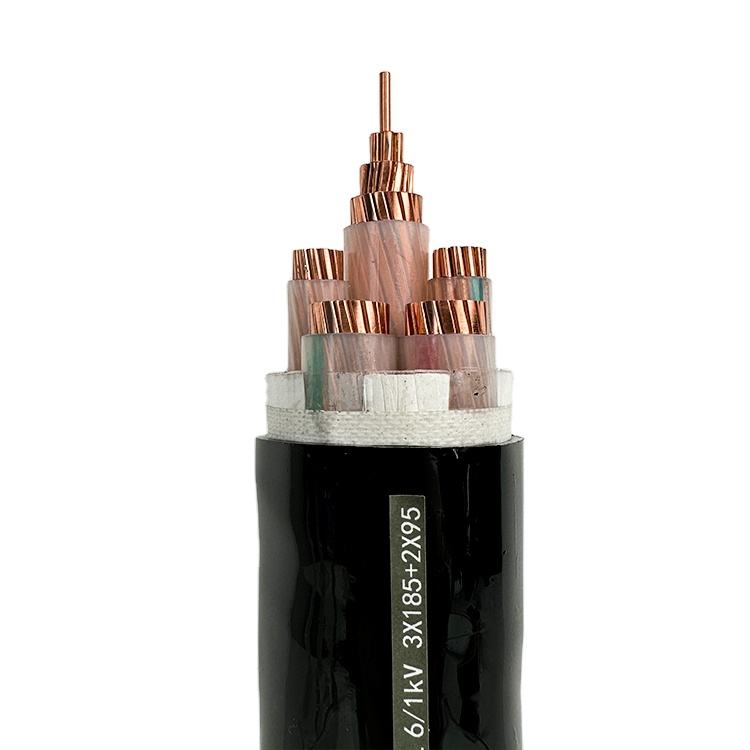-
![What is the applic···]() 2025-09-10 What is the applicable scope···
2025-09-10 What is the applicable scope···Low-smoke, halogen-free (LSZH) is a material classification for wire sheathing in the wire and cable industry. LSZH wire sheathing is composed of thermoplastic or thermoset materials that emit low smoke when heated and are inherently halogen-free. The reference standard for LSZH is JB/T 10491-2004,
read more > -
![What are the uses ···]() 2025-09-10 What are the uses of differe···
2025-09-10 What are the uses of differe···When it comes to high-voltage cables, we're primarily familiar with the wires on utility poles and the cables in underground pipe networks. High-voltage cables can be laid in various ways, including buried, piped, tunneled, or overhead. The selection of high-voltage cables for each installation
read more > -
![What does WDZB-BYJ···]() 2025-09-10 What does WDZB-BYJ wire mean···
2025-09-10 What does WDZB-BYJ wire mean···Nowadays, people are increasingly concerned about environmental protection, safety, and energy conservation. Choosing the right electrical wiring for home decoration is also a concern for many. So, what kind of electrical wiring is energy-saving and environmentally friendly? What kind of electrical
read more > -
![What is the differ···]() 2025-09-10 What is the difference betwe···
2025-09-10 What is the difference betwe···The WDZB-BYJ and WDZC-BYJ model numbers differ by only one letter, but they are indeed different cables. The WDZB-BYJ is a copper-core, cross-linked polyethylene insulated, halogen-free, low-smoke, sheathed, flame-retardant Class B power cable. The WDZC-BYJ is a copper-core, cross-linked polyethylen
read more > -
![What are the chara···]() 2025-09-10 What are the characteristics···
2025-09-10 What are the characteristics···As we all know, cables are essential components of power systems. A cable is generally considered a conductor consisting of one or more insulated wires, covered with an insulating protective layer, that transmits power or information from one location to another. Cables come in many different types
read more > -
![How to solve the p···]() 2025-09-10 How to solve the problem of ···
2025-09-10 How to solve the problem of ···When water enters a cable, what do you do? Water in a cable is a serious problem. So far, there's no particularly effective solution. You can either install a joint or replace the entire cable. Given the potential for water in the cable, prevention is generally the priority.1. Hazards of Water I
read more > -
![How should the wir···]() 2025-09-10 How should the wiring be arr···
2025-09-10 How should the wiring be arr···We all know that plumbing and electrical installation are crucial for home renovations. There are three methods for plumbing and electrical installation: overhead, wall-mounted, and above-ground. So how do you choose? What are the advantages and disadvantages? Today, I'll explain how to route pl
read more > -
![How to choose powe···]() 2025-09-10 How to choose power cable?
2025-09-10 How to choose power cable?Power cables are commonly used in urban underground power grids, power lines for power stations, internal power supplies for industrial and mining enterprises, and underwater transmission lines in rivers and oceans. The proportion of cables in power lines is gradually increasing. Power cables are us
read more > -
![What is YJLV cable···]() 2025-09-10 What is YJLV cable? What are···
2025-09-10 What is YJLV cable? What are···YJLV is an aluminum-core power cable, also known as a cross-linked polyethylene insulated, PVC-sheathed power cable. It is designed for indoor installation, trenches, and ducts, and can also be buried in loose soil. It cannot withstand external forces. When laid underground, YJLV cables can withstan
read more > -
![How to choose the ···]() 2025-09-10 How to choose the right hous···
2025-09-10 How to choose the right hous···When renovating a home and purchasing electrical wiring, many people assume that the thicker the wire, the better the quality, and therefore the safer and more reliable it is. This is actually a misunderstanding. The cross-sectional thickness of the wire should be determined based on the power ratin
read more >


